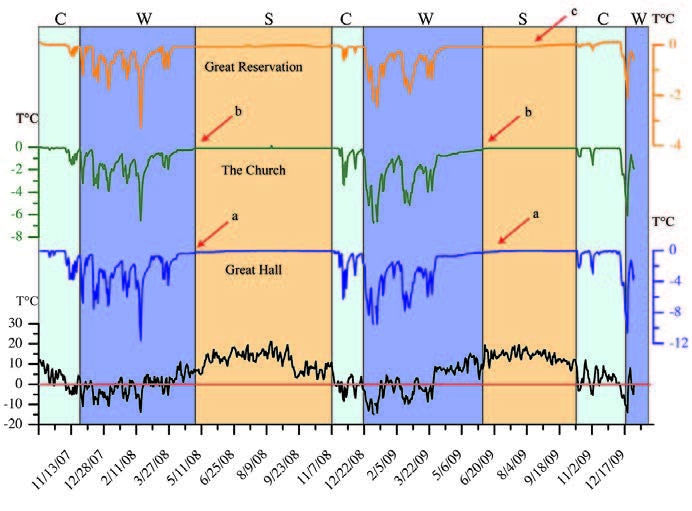The interplay between air temperature and ice mass balance changes in Scărişoara Ice Cave, Romania
DOI:
https://doi.org/10.3986/ac.v40i3.4Povzetek
This paper examines the short-term relations established between external and cave air temperature in Scărişoara Ice Cave (Romania) and the role they play upon ice genesis and mass balance changes. Geothermal heat and external climate are the main drivers of the cave’s air temperature, but the ice forming and ablation processes modulate its spatial and temporal characteristics. In the winter half-year, cold air inflow leads to the overcooling of the cave atmosphere and walls and ice formation; while in summer, melting of ice acts as strong thermal sink, keeping the air temperature at 0 °C. In autumn and winter, dynamic cooling of the cave atmosphere leads to ice build-up, whereas in summer, the causality is overturned, the cave air temperature being controlled by the melting ice. The existence of a net heat sink in the cave (melting ice in summer in this case), leads to the overcooling of the non-glaciated parts of the cave as well, a phenomenon that can hamper paleoclimatic reconstructions based on stable isotope studies in speleothems.Prenosi
Podatki o prenosih še niso na voljo.

Prenosi
Objavljeno
2011-12-28
Kako citirati
Perşoiu, A., Onac, B. P., & Perşoiu, I. (2011). The interplay between air temperature and ice mass balance changes in Scărişoara Ice Cave, Romania. Acta Carsologica, 40(3). https://doi.org/10.3986/ac.v40i3.4
Številka
Rubrike
Original papers
Licenca
Avtorji jamčijo, da je delo njihova avtorska stvaritev, da v njem niso kršene avtorske pravice tretjih oseb ali kake druge pravice. V primeru zahtevkov tretjih oseb se avtorji zavezujejo, da bodo varovali interese založnika ter da bodo povrnili morebitno škodo.
Podrobneje v rubriki: Prispevki




